The Canadian Canoe Museum receives a steady stream of diverse inquiries from around the world – typically regarding vintage canoes, equipment and related archival materials. Responding to these questions proves a fun challenge, and the process also inadvertently causes us to explore and learn about the unusual eddies within the museum’s own collections and resources. It is otherwise often difficult to make time for this.
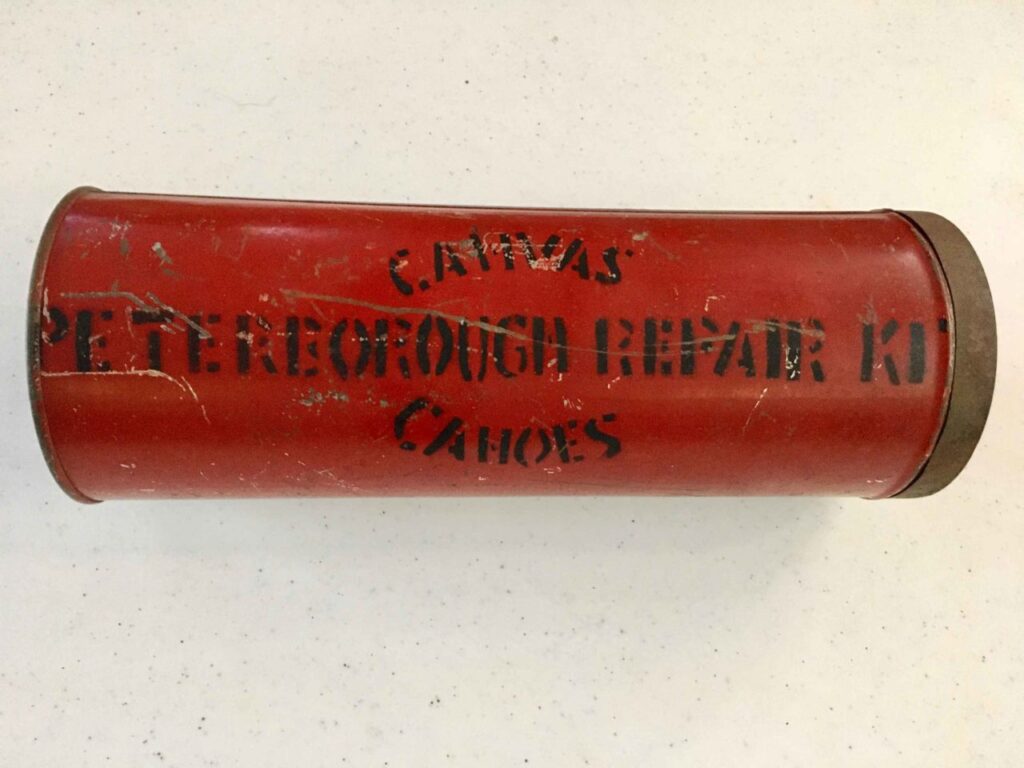
An inquiry recently came from a Canadian who has for the last 16 years made his life on Sado Island, Japan. Despite his new home, Johnny W’s passion for “mucking about the Canadian Shield in the 16’ foot Prospector-type cedar and canvas canoe that I built” is evident throughout his note. Perhaps as a reminder of this, Johnny brought with him to Japan a curious thermos-sized metal container carrying Peterborough Canoe Company branding he had acquired from a Canadian antique dealer. The cannister, empty but for a scrap of canvas, is marked “Peterborough Canvas Canoes repair kit”.
What originally was packed in this tube? A review of our catalogues from this company suggested this humble repair kit was first offered around 1929 and listed for $1.00.
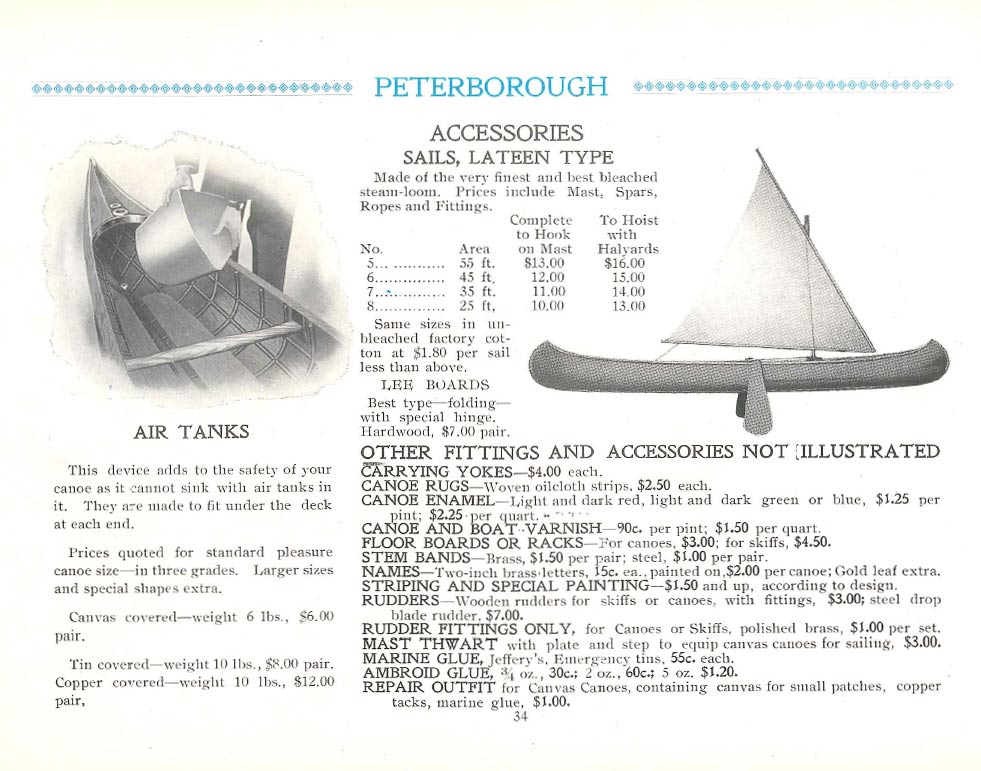
Among the rows of small artifact shelves in The Canadian Canoe Museum’s Collection Centre is an identical metal cannister. I had not taken the opportunity to unpack its contents before and was keen to see what types of repairs this canoe company imagined its customers would need or could execute while out on trip.
Inside were two short lengths of cedar rib stock, a paper envelope of brass canoe tacks, a piece of #10 canoe canvas and a larger piece of lightweight Egyptian cotton. Also included was a tube of Griffith’s “Genuine Supertite Cement: A Superior Air-Drying Rubber Cement”, made in Stratford ON. It was apparent that small sections of the fabric, a number of tacks and half of the tube of cement had already been used and I found myself wondering about the circumstances…
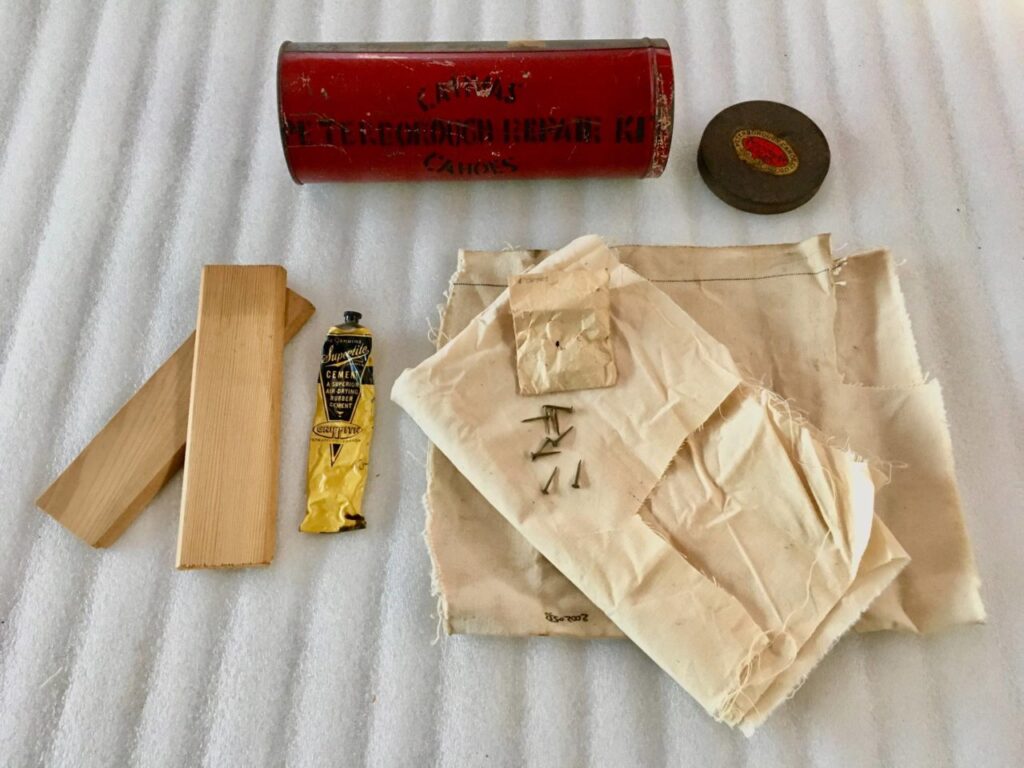
For repairs to canvas-covered canoes, the supplies found inside this cannister required skills and knowledge of the steps required. The short lengths of straight rib stock could be boiled and softened for bending to restore the canoe’s shape where sections of broken ribs had been removed. They could also be fitted between ribs to reinforce broken planking. Brass tacks, driven through from the outside of the hull through the remaining planks and ribs, would be clinched over inside against the back of a hatchet (or rock) locking all together. Repairs to the damaged outer canvas itself relied upon early waterproof glues of the day, applied sometimes by simply bonding patches over the tear. For larger tears and damage, a layer of thin cotton was slid between the canvas cover and the wooden hull. This was bonded to the underside of the original skin before a heavy canvas patch was fitted and glued to cover the void. The cement served also to waterproof the new fabrics and allowed the canoe to be paddled out and eventually returned to the shop for cosmetic repairs, if so lucky.
While “Griffith’s Supertite Cement” supplied by Peterborough Canoe Co is described as a rubber cement, contemporary wooden canoe enthusiasts have also sustained an appreciation for a largely obsolete product from the early 20th century called “Ambroid cement”. Made using highly flammable celluloid (also used to produce early plastics and camera film), the cement offered the ideal combination of being waterproof, excellent adhesion, durability and flexibility. For devotees, Ambroid cement was considered an essential component of their own kit. Don Bivens, a director with Keeywaydin, offered this advice to campers heading out on their extended 6-week trips (packing 1.5lbs of the stuff) in his manual:
What To Do When You Run Out of Ambroid
- Don’t run out of Ambroid.
- Failing that, try not to hit anything.
(Bivens does offer a useful third step providing a lengthy explanation on making spruce gum pitch as used on bark canoes)
If you are not reassured by just packing duct tape (my spouse/paddling partner Anna has about 20 feet wrapped around a water bottle for this purpose), equipping your wooden canoe’s outfit with a contemporary repair kit may be found in various sources, for instance, Mike Elliott of Kettle River Canoes’ online posts with this list and found in his canoe restoration manual, “This Old Canoe”.
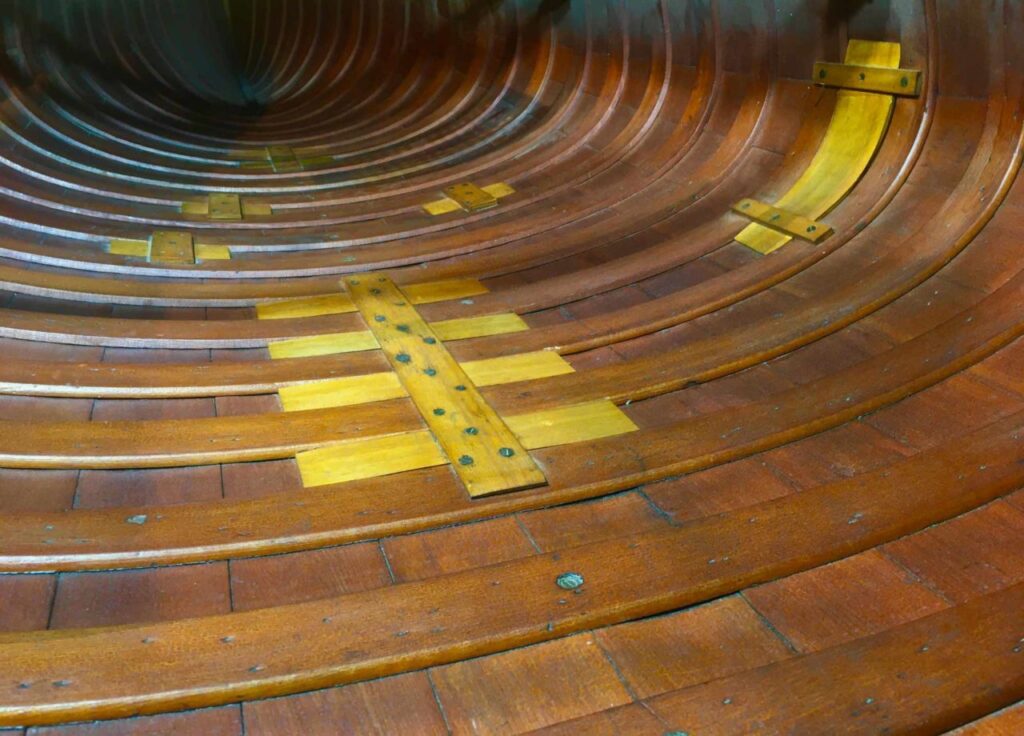
With a collection of more than 600 canoes and kayaks to explore, I am often drawn less to those objects that are in pristine “showroom” condition (sometimes curiously described as “museum quality”). More often than not, this state results from a restoration and, with it, the erasure of scars from their use and misadventures, of the dedicated hands that patched things up to get them back on the water, and of the stories they may still carry.
Share Your Misadventures With Us!
The rest of the Canadian Canoe Museum team and I would certainly love to see and hear about your own canoeing misadventures while on trip, and of the repairs it took to carry you out!
Email your photos and stories to [email protected] and we will share your stories on our social media channel, or in a follow-up blog.
I have memories of a large tear in the canvas of an old prospector canoe while on a canoe trip in the early 60s. We patched up the canoe and completed the trip thanks to balsam gum and birch bark.
Peter
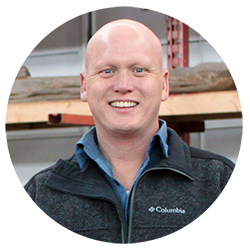
Jeremy Ward
Curator
Jeremy’s involvement with the museum began as a volunteer. He joined the staff in 1997. Previously, he coordinated a field school for Trent University in the Nunavut community of Pangnirtung, and undertook cabinetmaking, birch bark canoe building and archaeological work in Greece. A graduate of Trent University’s Canadian Studies and Indigenous Studies programs, Jeremy’s work has included curating or producing more than ten major exhibitions, many of which are still on display or travelling. He has also researched, and been featured in, documentaries aired on the Discovery Channel and the BBC, including most recently The Nature of Things. A notable project was the research and construction of a 36-foot birch bark canoe. Working before the public at the museum along with a team of volunteers, Jeremy built an authentic, functional example of the canot du maître, the workhorse vehicle of the 18th and early 19th century fur trade in Canada. Jeremy has also acted as the Director of the Museum Small Craft Association on a volunteer basis.






